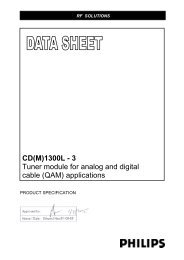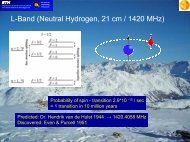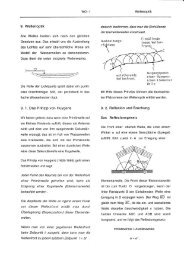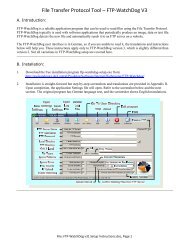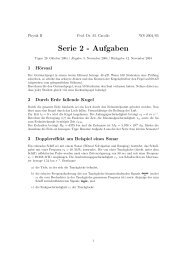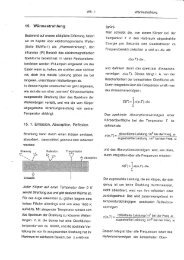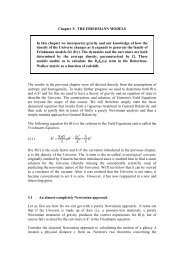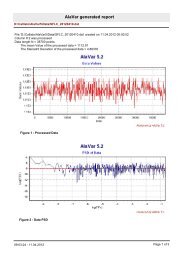here - Institute for Astronomy Umleitung
here - Institute for Astronomy Umleitung
here - Institute for Astronomy Umleitung
You also want an ePaper? Increase the reach of your titles
YUMPU automatically turns print PDFs into web optimized ePapers that Google loves.
Title: Science Case<br />
Reference: MUSE-MEM-SCI-052<br />
Issue: 1.3<br />
Date: 04/02/2004<br />
Page: 11/100<br />
Ellis et al. 2001, ApJ, 560, 119<br />
Franx et al 1997, ApJ, 486, 75<br />
Giavalisco et al. 1998, ApJ; 503, 543<br />
Hu & McMahon 1996, ApJ, 459, 53<br />
Hu et al. 1999, ApJ, 522, 9<br />
Hu et al. 2002, ApJ, 576, 99<br />
Kodaira et al. 2003, PASJ, 55, 17<br />
Kudritzki et al. 2000, ApJ, 536, 19<br />
Le Fevre et al, 2003, The Messenger 111<br />
Madau et al, 1996, MNRAS, 283, 1388<br />
Pettini et al 1998, ApJ, 508, 539<br />
Rhoads et al. 2000, ApJ, 545, 85<br />
Rhoads et al. 2003, AJ, 125, 1006<br />
Scoville et al, 2003 (http://www.astro.caltech.edu/cosmos)<br />
Shapley et al., 2001, ApJ, 562, 37<br />
Stanway et al. 2004, ApJ, submitted, astroph/0312459<br />
Shapley et al 2003, ApJ, 588, 65<br />
Stiavelli et al. 2001, ApJ, 561, 37<br />
Steidel et al, 1996, ApJ, 462, L17<br />
Steidel et al, 1999, ApJ, 519, 1<br />
Steidel et al, 2003, ApJ, 592, 728<br />
Steidel et al, 2001, ApJ, 546<br />
Steidel et al, 1998, ApJ, 508, 539<br />
Taniguchi et al. 2003, ApJ, 585, 97<br />
Venemans et al. 2002, ApJ, 569, 11<br />
Weymann et al, 1998, 505, L95<br />
2.2. High redshift Lyman alpha emitters<br />
The main target of the MUSE surveys is to find and study the building blocks of the local,<br />
normal galaxies such as our Milky Way, at an epoch when the universe was typically 1 Gyr<br />
old. The observation of such objects will be of great value to clarify the way galaxies <strong>for</strong>m. In<br />
the commonly accepted hierarchical picture, mass assembling is a long-timescale process, that<br />
starts early and goes on till the present time. Making the census of big and small objects in the<br />
early universe, when the cosmic age was 1 Gyr, and studying their properties, will set strong<br />
constraints on detailed models of hierarchical galaxy <strong>for</strong>mation. In this prospect, the specific<br />
questions which one wants to address by studying this population of objects are the following:<br />
how did galaxies like our Milky Way assemble from small fragments? What are the stellar<br />
and gaseous masses of these fragments? What are the masses of the dark matter haloes they<br />
are hosted in? What are their typical star <strong>for</strong>mation histories?<br />
The issue is to find an observational signature that is as efficient as possible to identify highredshift<br />
low-mass objects. In section 2.1, we have argued that high-redshift low-mass objects<br />
should be searched <strong>for</strong> in an emission-line survey, and that MUSE is a unique instrument to<br />
reach this goal. Hereafter, we try to refine our estimates of the MUSE efficiency with respect<br />
to current surveys, and we discuss the type of statistical studies that could be achieved.




